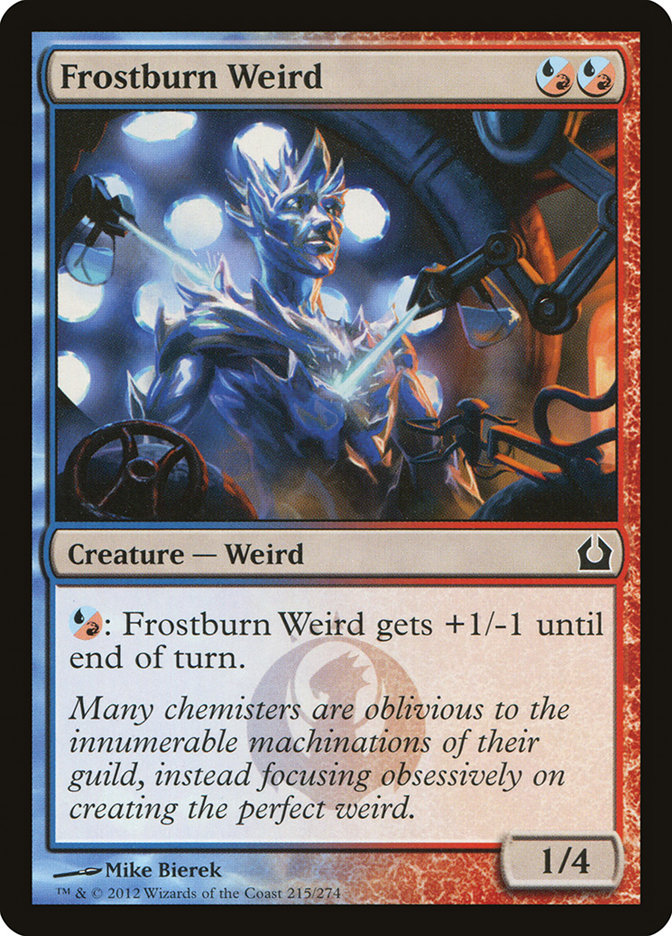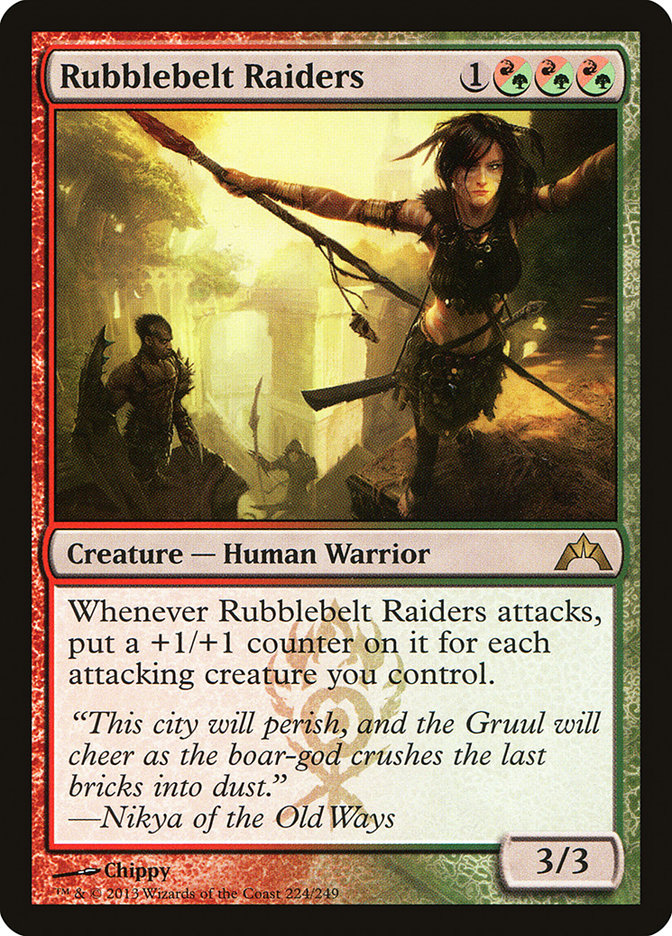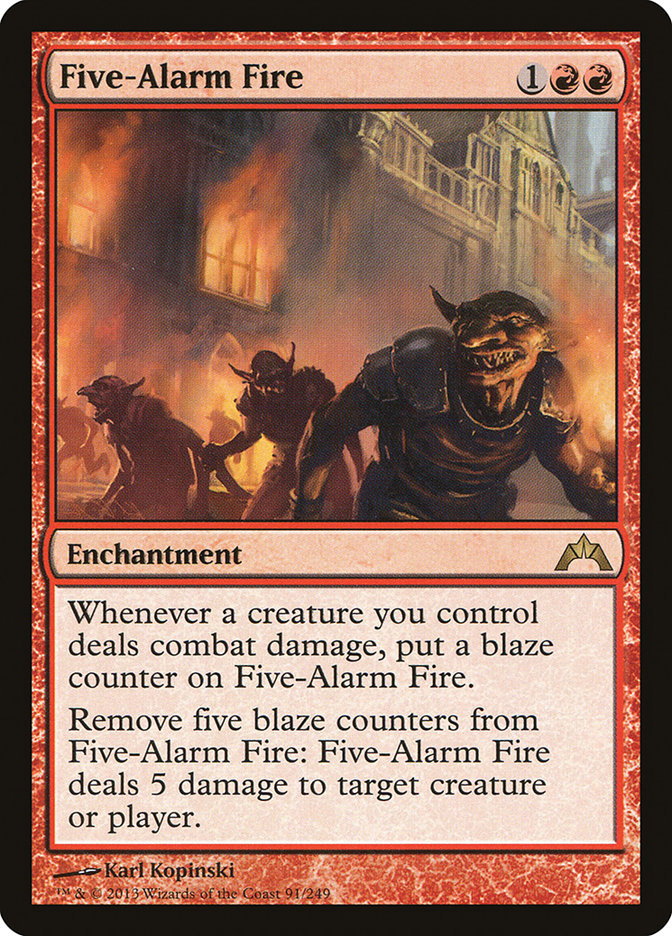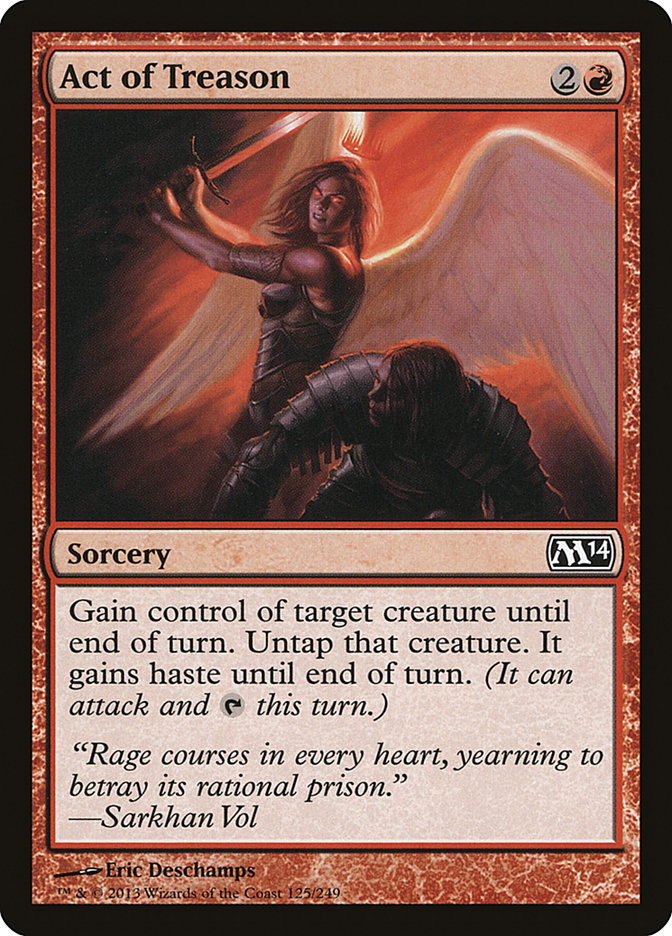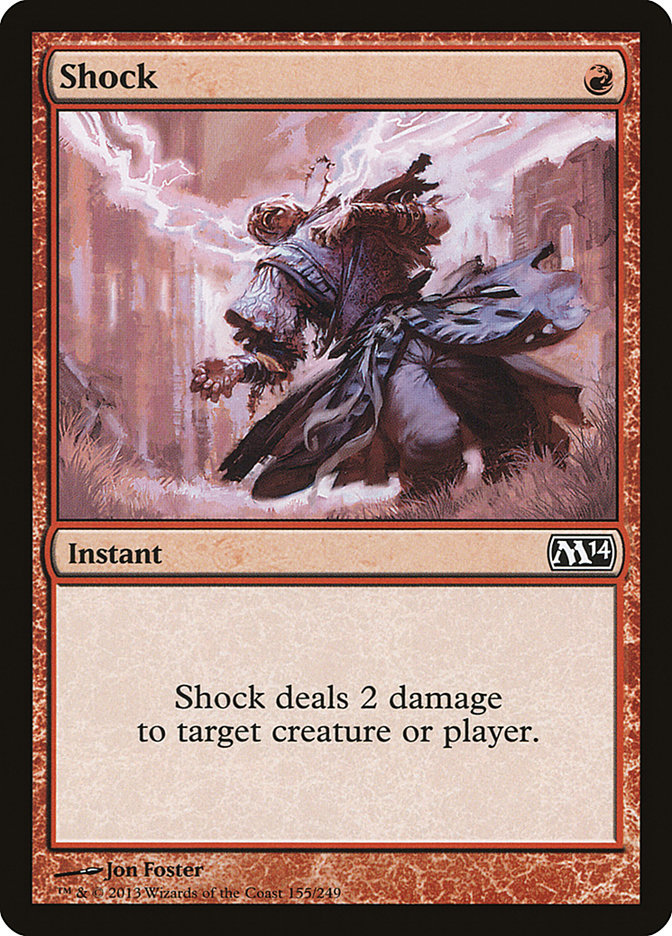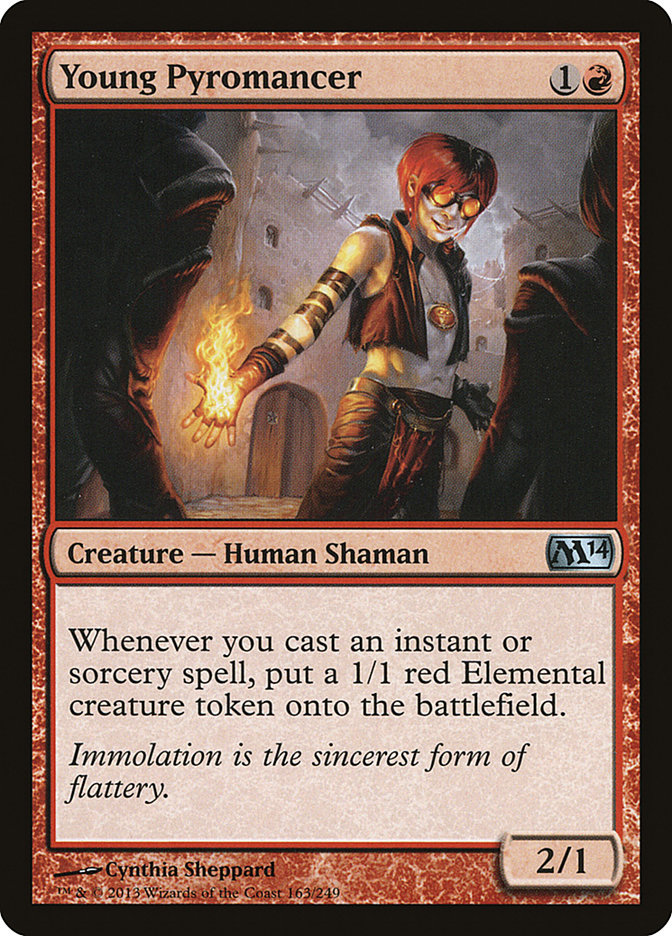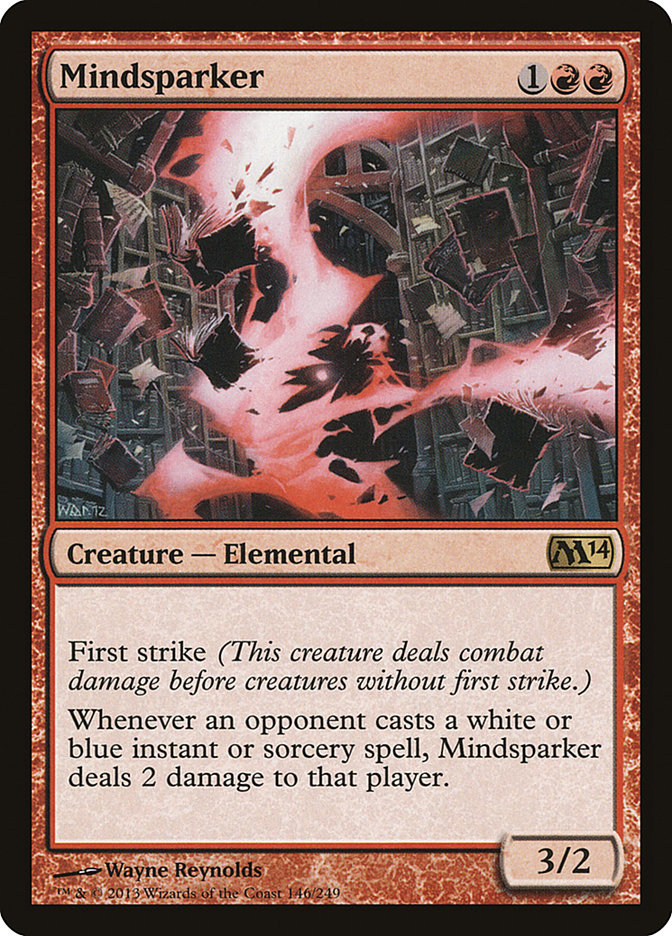Mono-Red Aggro decks in Magic often are misunderstood. They’re seen as the "stupid deck" because they don’t focus on card advantage or late-game strategy (also running: they don’t play Island). However, in order to be piloted optimally, they require an exceptionally steady hand and the ability to squeeze every last point of damage from each card, whether by unexpected attacks or by bluffs. In some ways, we might even consider Mono-Red Aggro to be one of the more difficult archetypes to play successfully. A control deck can simply "take control" with a card like Supreme Verdict, and if we don’t answer with another good threat, they just bury us in card advantage. Their game plan is binary in that sense: if no control, gain control; if control, draw cards and keep control.
Mono-Red Aggro has to count every single point of life and remove them from the opponent one by one, often using cards that aren’t optimal. Red gets some spicy creatures from time to time, like Thundermaw Hellkite, but in a world full of Firefist Strikers, Voice of Resurgence is king. Mono-Red Aggro simply doesn’t have the resilience of some other creature-based strategies. Further, Mono-Red Aggro can be a frustrating opponent because it has the ability to win before we can even cast or draw a card like Supreme Verdict, making the entire process feel "stupid" (read: we didn’t like the outcome).
Arguably, the most attractive aspect of Mono-Red Aggro, though, is the financial cost. In most instances, Mono-Red Aggro will be the cheapest competitive deck in the format. Once in Legacy—a format filled with expensive cards—I didn’t have a deck and wanted to play in a tournament, so I purchased four copies of Premium Deck Series: Fire and Lightning at MSRP, borrowed a few other cards, and finished in the "money" (well, in the packs).
Especially for those of us attempting to play in two different planes of existence (real life and Magic Online), cost can sometimes be a factor in deck selection, especially with a niche format like Block Constructed. The Mono-Red Aggro deck that is running rampant in Return to Ravnica Block Constructed is such a creature. It’s not beautiful and is certainly not the best, but for those of us who can’t have a purebred, it’ll do. Because the decks from Block Constructed often make the transition in some form to the new Standard after rotation, it can be instructional to examine what has worked and what hasn’t over a season of playing a deck and to look at potential additions for the new format.
I affectionately call the Return to Ravnica Block Mono-Red Aggro deck my "3-1 special" because I frequently go 3-1 in Daily Events with it but can never quite manage a 4-0. Some of that likely is pilot error, but I see an awful lot of other Mono-Red Aggro decks in the tournaments and rarely see them go undefeated. C’est la vie.
Here’s the most recent list I’ve been using:
Creatures (36)
- 4 Ash Zealot
- 4 Gore-House Chainwalker
- 4 Rakdos Cackler
- 4 Burning-Tree Emissary
- 3 Legion Loyalist
- 4 Firefist Striker
- 4 Foundry Street Denizen
- 4 Boros Reckoner
- 1 Pyrewild Shaman
- 4 Rubblebelt Maaka
Lands (18)
- 18 Mountain
Spells (6)
Sideboard

This maindeck is fairly typical, though most decks eschew the Pyrewild Shaman for a fourth Legion Loyalist and many run additional copies of Dynacharge. Of all of the cards in the deck, I find that Legion Loyalist is the most situational; there are many times when it’s just a bad Goblin Guide, so I wanted to hedge my midgame bets ever so slightly by having a recurring threat. Although it’s just a singleton, I’ve been very happy with the Pyrewild Shaman and ended up adding a second one to the board.
Notable Inclusions
The first time an opponent played this against me, I thought I had won the match simply because it wasn’t a card that is found in the stock list. However, I have to acknowledge that my mystery opponent (whose identity has been lost to the annals of time) may have had it right. Absent an enchantment or combat trick, Mono-Red Aggro doesn’t have a single card that can attack through a Frostburn Weird, and it has the ability to hit back for four without dying to any single blocker (and it can often force a two for one). Given the prevalence of the mirror match, that’s a big deal.
It’s also a much more serious threat with Madcap Skills than many of the other creatures in the deck. Finally, it’s also a better topdeck than many other creatures if we accidentally get to the mid or late game and need a creature because it presents a substantial threat (while not clogging up our hands early in the game).
Against Esper Control, we frequently lose the game if they cast a Supreme Verdict and are able to follow up with any reasonable answers. However, there is a situation in which I have been able to catch a number of opponents; if they are at a relatively low life total when they sweep the board and don’t have an immediate threat like Aetherling, then we can wait for them to cast Sphinx’s Revelation and respond with Skullcrack. At that point, if we’ve done our job correctly, we likely then hit them for five to seven damage with Trouble to end the game.
Cards I’ve Seen But Don’t Like
This card is obviously amazing if it gets going, but with only eighteen Mountains and the intention to end the game as quickly as possible, it’s not clear that a 3/3 without haste, even one with such a powerfully aggressive ability, is where we want to be. When I tested this, more often than not it simply sat in my hand until it was far too late to be useful.
This is a Lava Axe that our opponent can see coming and play around. While there are certainly situations in which it can be powerful, my experience has been that I’ve only activated this card in games that I was already going to win and it rarely won me games that I was losing. That’s not a very powerful statement of support.
This card is probably fine, especially against the Loxodon Smiter deck. As things currently stand, that matchup is so difficult (Trostani, Selesnya’s Voice is a literal punch in the face) that I don’t dedicate sideboard slots to it. My sideboard is currently weighted relatively heavily against control and the mirror match simply because those are the decks against which I play more frequently, probably owing to the absurd cost of Voice of Resurgence online.
So where can we take the deck once it leaves Block Constructed? Since we don’t know a ton about Theros yet (twelve red cards aren’t enough to really work with), we can begin to speculate with M14. Given the nature of the set, I’ve separated the "interesting" red cards into two categories: cards that could immediately see play in this style of deck (quasi-Sligh) and cards that are great for a mono-red deck but that may require a different strategy.
It’s worth noting that the StarCityGames.com Standard Open in Baltimore, Maryland was won by a mono-red deck, although it utilized a lot of cards that won’t be around post-rotation, including:
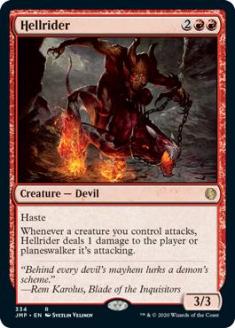
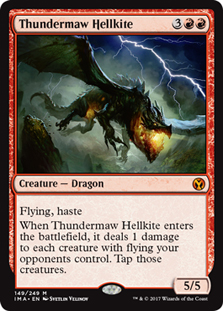
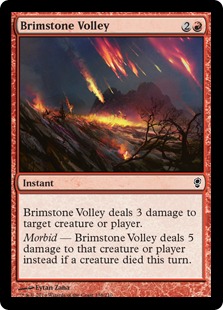
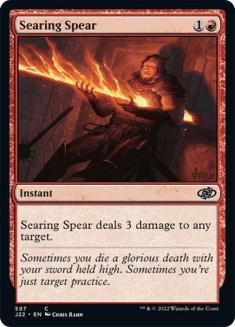
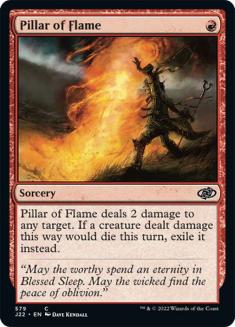
In the maindeck alone, that deck loses seventeen cards out of 35 nonland cards, which is a good half of the deck. If we want to play Big Red post-rotation, we’ll need to seriously restructure our deck.
Cards That Are Potentially Good In Mono-Red Aggro
The ability to hit a player makes a world of difference, and even though it pains me to say it, I think that this deck could really use four copies of Shock. There simply isn’t any good utility-based burn right now (that can hit players and creatures for a meaningful amount), and I refuse to play Turn // Burn simply for the Burn side. Shock helps us out in this department, although it’s no Lightning Bolt.
If we’re running Shock, Dynacharge, and another burn spell of some sort, then Young Pyromancer is probably a decent inclusion somewhere in this deck. As a 2/1 for two, it just makes the cut as a reasonable creature, and there are sequences of plays involving Dynacharge where it can simply win us the game against an unsuspecting opponent.
Running more than four cards that cost three mana (Boros Reckoner) is pushing it in a deck that runs eighteen lands. If we’re willing to go just a little bigger and run one or two more lands, I could see potentially including Mindsparker as a meaningful threat, although it still gets blocked by Loxodon Smiter. At this point, speaking from the aggro perspective, I’m actually less excited about Mindsparker than I am about Shock, though it’s a great sideboard card in either case.
Unfortunately, however, that’s it.
There are a lot of cards and synergies that encourage us to go larger though.
Ogre Battledriver and Young Pyromancer absolutely love one another. Although they probably aren’t the best dressed at the prom right now thanks to the relative strength of other red cards, I would be surprised if they don’t appear together in some sort of deck during the next year. That will, however, require there to be a few more powerful spells in red, which post-rotation will have a serious dearth of spell quality.
Burning Earth continues to punish unprepared players and probably will never be more than a sideboard away unless the best decks suddenly become one- or two-colored.
Awaken the Ancients falls closer to the "cute" side of things, but seven power out of nowhere, even with an actual cost of five mana thanks to the use of a land, isn’t terrible. Of all of the Big Red cards in M14, this is the one about which we should be the most skeptical for Standard, but stranger things have happened.
As things currently stand, red is in a very strange position until we learn more about Theros. It doesn’t have quite enough punch as an aggro deck to compete in Standard—the most successful decks in this vein in recent years have played more powerful cards (Goblin Guide) or more explosive ones (Kuldotha Rebirth). At the same time, it doesn’t have quite enough depth to foster a Big Red list. A basic shell, as things currently stand, might look like this:
Mono-Red Midrange
4 Ash Zealot
4 Chandra’s Phoenix
4 Boros Reckoner
4 Young Pyromancer
4 Ogre Battledriver
3 Chandra, Pyromaster
4 Shock
3 Mizzium Mortars
6-8 unspecified red spells
2-3 Mutavault
Mountains
In the event that multicolor decks remain prevalent and continue to use nonbasic mana bases, Burning Earth merits a maindeck slot, but I suspect that it will wind up as a sideboard card as more players adjust to its impact on the metagame. This is a far cry from the aggressive, fist-into-face deck that exists in Block Constructed, but unless some significant, cheap threats emerge for red in the next set, the closest we’ll get to a large clump of Mountains will be through a midrangey thing that looks something like the above example or an even bigger control-based red deck.

